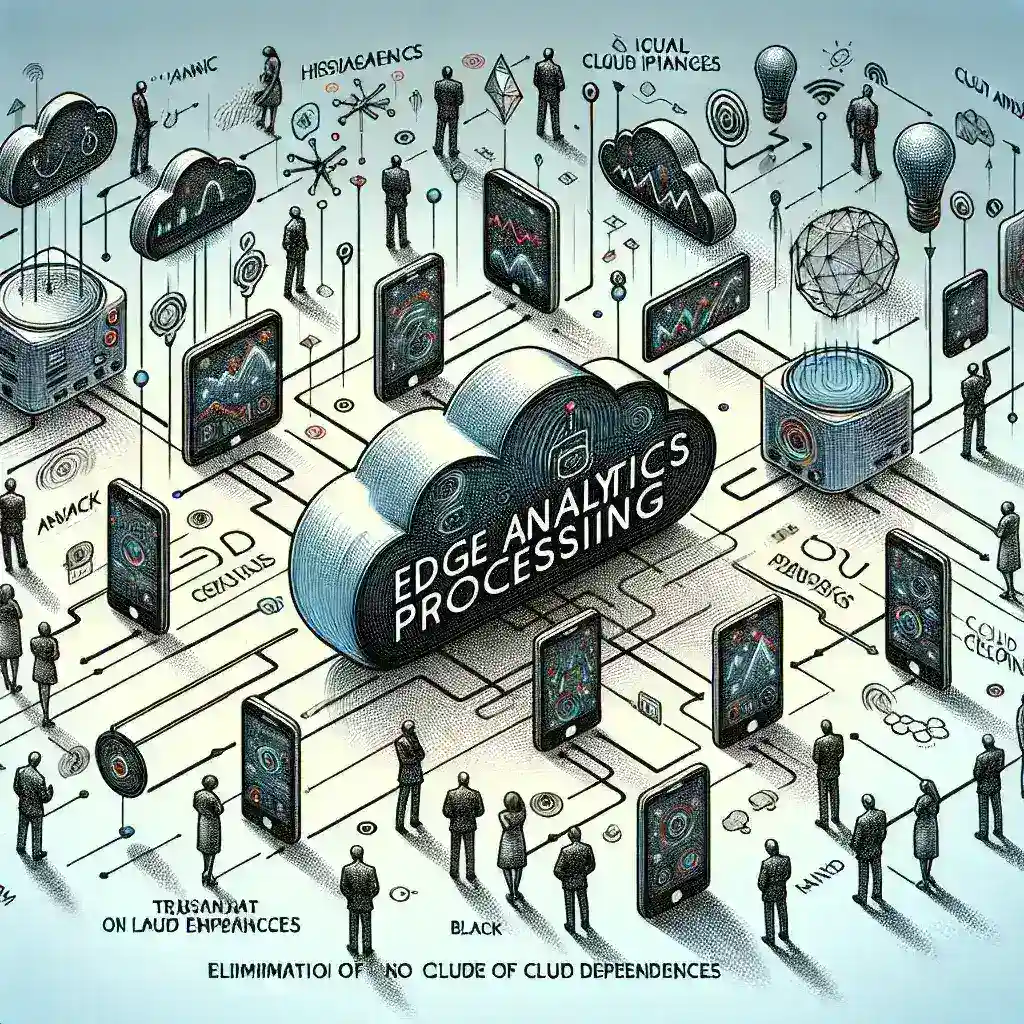Introduction to Edge Analytics
In the rapidly evolving landscape of Internet of Things (IoT) devices, the need for efficient data processing has never been more critical. As businesses and consumers increasingly rely on IoT devices for various applications, the traditional model of cloud-based data processing is being challenged. This article delves into how edge analytics processing is revolutionizing the way data is handled, eliminating cloud dependencies and enabling real-time insights.
Understanding Edge Analytics
Edge analytics refers to the practice of data processing at the edge of the network, closer to the source of data generation. Unlike traditional cloud computing, where data is sent to a centralized server for processing, edge analytics processes data locally on devices or nearby edge servers. This approach significantly reduces latency, enhances privacy, and minimizes bandwidth usage.
Historical Context
The concept of edge computing dates back to the early days of IoT when the limitations of cloud-based processing became apparent. As data volumes exploded, the challenges of latency, bandwidth costs, and security concerns prompted the need for more efficient solutions. Over the years, edge analytics has gained traction, thanks to advancements in processing power, machine learning, and network infrastructure.
The Rise of IoT Devices
IoT devices have permeated various sectors, from smart homes to industrial automation, generating vast amounts of data. According to a recent study, it is estimated that by 2025, there will be over 75 billion connected IoT devices globally. This growth necessitates the need for efficient data handling, which is where edge analytics comes into play.
Benefits of Edge Analytics Processing
- Reduced Latency: By processing data closer to the source, edge analytics minimizes the time taken to derive actionable insights, which is crucial for time-sensitive applications.
- Bandwidth Efficiency: Sending large volumes of data to the cloud can strain bandwidth. Edge processing reduces the amount of data transmitted, allowing only essential information to be sent to the cloud.
- Enhanced Security: Keeping sensitive data on local devices reduces the risk of data breaches and enhances privacy.
- Real-Time Insights: Edge analytics allows for immediate decision-making based on real-time data, which is particularly beneficial in sectors like healthcare and manufacturing.
How Edge Analytics Eliminates Cloud Dependencies
Edge analytics fundamentally changes the data processing paradigm, reducing reliance on cloud infrastructure. Here’s how:
1. Local Data Processing
With edge devices capable of processing data locally, organizations can operate independently of cloud services. This independence allows for operational continuity even in cases of cloud outages or connectivity issues.
2. Scalability
Organizations can easily scale up their IoT deployments without worrying about the limitations of cloud capacity, as edge devices can handle additional processing requirements.
3. Cost Efficiency
By minimizing data transfer to the cloud, organizations can significantly reduce operational costs associated with bandwidth and cloud storage. The reduced dependency on cloud services can lead to substantial savings over time.
Challenges of Edge Analytics Processing
While edge analytics offers numerous benefits, it also comes with its own challenges:
- Device Limitations: Not all IoT devices have the processing power required for advanced analytics. This limitation can hinder the implementation of edge analytics.
- Complexity of Management: Managing a distributed network of edge devices can be more complex than centralizing data processing in the cloud.
- Security Concerns: While edge processing enhances security, it also introduces new vulnerabilities that must be addressed to prevent attacks on localized data.
Future Predictions for Edge Analytics in IoT
The future of edge analytics in IoT is promising. As technology continues to evolve, we can expect:
- Increased Adoption: More industries will adopt edge analytics to meet the demands of real-time processing and data-driven decision-making.
- Integration with AI: Edge analytics will increasingly integrate with artificial intelligence and machine learning capabilities, enabling smarter devices that can learn and adapt in real time.
- Enhanced Interoperability: As standards improve, edge devices will become more interoperable, facilitating seamless communication across different platforms and systems.
Real-World Examples of Edge Analytics
Several industries are already leveraging edge analytics to enhance efficiency and productivity:
Healthcare
In healthcare, edge analytics is used in wearable devices to monitor patient vitals in real time. This data can be processed locally, allowing healthcare professionals to make immediate decisions based on critical health indicators.
Manufacturing
Manufacturers use edge analytics to monitor machinery performance and predict maintenance needs. This proactive approach helps prevent downtime and increases overall efficiency.
Smart Cities
Smart city initiatives use edge analytics to manage traffic flow and monitor environmental conditions. By processing data at the edge, cities can respond to changing conditions in real time, improving the quality of life for residents.
Conclusion
Edge analytics processing represents a significant shift in the way data is handled in the IoT landscape. By eliminating cloud dependencies, organizations can achieve greater efficiency, security, and real-time insights. As the adoption of IoT devices continues to grow, edge analytics will play a pivotal role in ensuring that these technologies can operate effectively and independently, paving the way for innovative applications across various sectors.




Leave a Comment